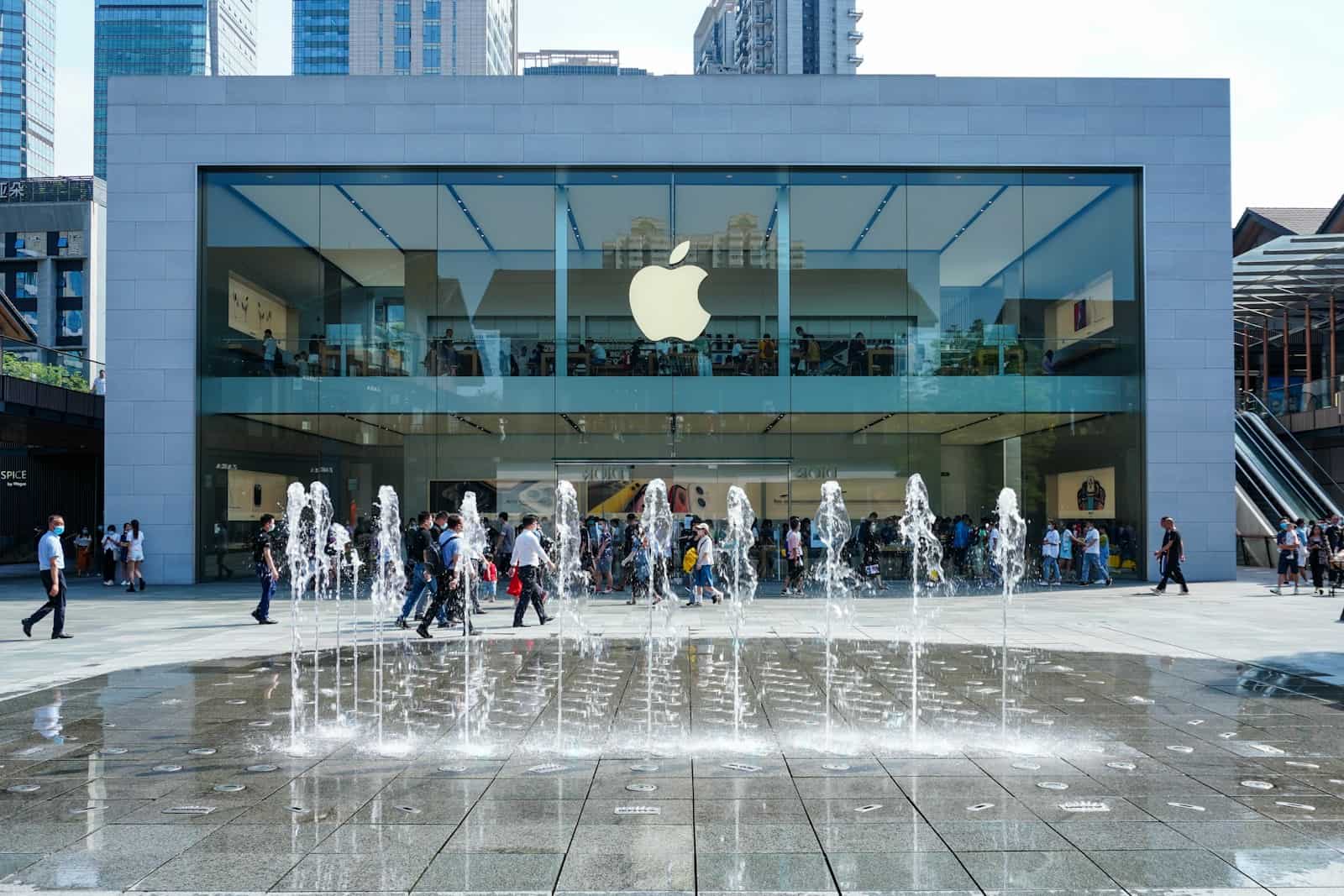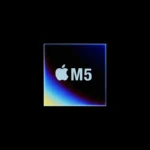The tech world was shaken by the recent round of U.S. tariffs on Chinese imports, with headlines suggesting that iPhone prices could soar—some estimates predict costs could reach as high as $2,150 or even $3,500 per device. However, these dramatic projections overlook several important factors: Apple is actively responding to the situation, most iPhone components are not manufactured in China, and Apple has substantial assembly operations in other countries, such as India.
Through calculated manufacturing shifts, flexible sourcing, and financial maneuvering, Apple is in a strong position to blunt the impact of these tariffs. Yes, iPhone prices are going up—but not nearly as much as the panic suggests.
Apple’s Playbook: Diversify and Distribute

One of Apple’s most effective tools is its ongoing strategy to reduce dependence on Chinese manufacturing. Dubbed the “China Plus One” approach, Apple has been steadily expanding production to other countries, most notably India and Vietnam.
- India currently produces about 15% of iPhones, and Apple aims to raise this to 25% by 2027. The company has already begun prioritizing Indian-assembled iPhones for U.S. distribution—a direct response to tariffs targeting Chinese imports.
- In fact, Apple has chartered direct cargo flights from India to the U.S., circumventing potential supply chain delays and tariff exposure that would come with shipping through Chinese channels.
This isn’t a theory—it’s already happening. That makes the most extreme price projections increasingly unlikely for the majority of U.S. iPhone buyers.
A Global Supply Chain Gives Apple Leverage
What many headlines miss is that only the final assembly of iPhones is concentrated in China. The iPhone is a globally sourced device, with critical components manufactured across dozens of countries:
| Component | Country / Region | Manufacturer(s) |
|---|---|---|
| Application Processor (A17) | Taiwan (TSMC) / U.S. (Apple) | Apple-designed, TSMC-fabricated |
| OLED Display Panel | South Korea / China | Samsung, LG Display, BOE |
| Battery | China, South Korea, Vietnam | Sunwoda, LG Chem, Desay |
| Camera Modules | Japan, South Korea, China | Sony, LG Innotek, Cowell |
| RAM & Storage | South Korea, Japan, U.S. | SK Hynix, Samsung, Kioxia, Micron |
| Modem & Power ICs | United States, Europe | Qualcomm, TI, STMicro, Dialog |
| Face ID & Other Sensors | U.S., Austria | Lumentum, AMS |
| Final Assembly | China, India, Vietnam | Foxconn, Pegatron, Wistron |
Apple’s access to this global network gives it wiggle room to reduce tariff exposure. The company can tweak its sourcing strategy—favoring suppliers in non-tariff-affected regions—and emphasize devices assembled outside of China for specific markets like the U.S.
Pricing Strategy: Cushion the Blow

Even with higher production costs, Apple has multiple tools to soften the impact on consumers:
- Selective Price Adjustments: Instead of a sweeping price hike, Apple could incrementally raise prices only on certain models or configurations. Higher-margin Pro models may see slight increases, while base models could remain closer to current price points.
- Profit Margin Flexibility: With gross margins consistently over 40%, Apple has the room to temporarily absorb a portion of the added cost, especially to maintain competitiveness.
- Longer Financing Options: Apple is expected to offer extended installment plans—such as 36-month Apple Card financing—to make even a higher-priced iPhone feel more affordable on a monthly basis.
- Eliminating Low-Margin Variants: By removing lower-storage versions or bundling features, Apple can preserve its bottom line without dramatic sticker shock for customers.
Can Apple Avoid the Worst?

Apple may also seek exemptions from certain tariffs. Analysts peg the odds at around 50%, given Apple’s heavy investment in U.S. jobs, chip development, and manufacturing partnerships like those with Corning and Broadcom.
Plus, Apple’s brand loyalty and ecosystem stickiness give it leverage that few other companies possess. Even if prices rise modestly, iPhone users are unlikely to jump ship for a competing platform.
The Bottom Line
Yes, the tariffs are real—and yes, they will have an impact. But the sky isn’t falling, and you’re probably not going to see an iPhone priced like a Mac Pro. Apple’s strategic response—diversifying assembly, leveraging its global supply chain, and adjusting its pricing and financing options—suggests that most U.S. consumers will see only moderate price increases, not the dramatic surges being thrown around in headlines.
In an era of economic uncertainty and shifting trade dynamics, Apple’s agility will be tested. But if history is any guide, the company is more than capable of protecting its margins—and your wallet.
iPhone Pricing Impact from Trump’s Tariffs
The recent implementation of steep tariffs on Chinese imports has created significant challenges for Apple’s iPhone business model. With tariffs now reaching 145% on goods from China, consumers may soon face dramatically higher prices for popular tech products. The impact extends beyond just pricing to affect Apple’s entire global supply chain strategy.
Production Realities
Apple currently relies heavily on Chinese manufacturing for its flagship products. Approximately 90% of iPhones are assembled in China, with components sourced from over 1,000 suppliers worldwide. This globalized production approach has been central to Apple’s ability to deliver high-quality devices at current price points.
The current manufacturing setup includes:
| Product | % Assembled in China | Alternative Production Locations |
|---|---|---|
| iPhones | ~90% | India (~10%) |
| iPads | ~80% | Limited alternatives |
| Macs | >50% | Limited alternatives |
| Apple Watches | Minimal | Primarily Vietnam (subject to 10% tariff) |
This dependency makes Apple particularly vulnerable to the new tariff structure. Moving production to the United States faces several practical obstacles:
- Lack of specialized manufacturing infrastructure
- Insufficient numbers of trained tooling engineers
- Limited flexible labor force for seasonal production demands
- Estimated $30 billion cost to relocate even 10% of production
- Time requirement of approximately 3 years for meaningful transition
Potential Price Increases
Financial analysts have projected substantial price hikes if Apple passes along tariff costs to consumers. For example, the iPhone 16 Pro Max could increase from $1,199 to approximately $2,150 – a 79% jump. This represents what some market analysts have termed a “category 5 price storm” for American consumers.
If Apple attempted to manufacture iPhones entirely in the US, estimates suggest prices could potentially more than triple, making a $3,500 iPhone the new reality. This would fundamentally alter the product’s market position and consumer accessibility.
Apple’s Response Options
Apple faces several strategic choices in addressing the tariff challenge:
Seek Tariff Exemptions: The company previously secured exemptions during Trump’s first administration.
Absorb Costs Temporarily: Accept reduced profit margins in the short term while developing longer-term solutions.
Accelerate Production Shifts: Apple has reportedly chartered cargo flights to transport approximately 1.5 million Indian-made iPhones to the US market.
Geographic Price Adjustments: Apple may implement global price changes to prevent arbitrage opportunities between markets with different pricing structures.
The company might also employ mixed strategies depending on product lines and market conditions. Some analysts believe Apple may keep US prices stable while increasing prices in other markets to recover margins.
Competitive Landscape
The tariff situation could alter competitive dynamics in the smartphone market. Samsung may gain advantage due to its more diversified manufacturing footprint across countries facing lower tariff rates. This potential shift comes at a time when Apple is also investing heavily in new technologies like artificial intelligence.
Consumer Preparation
Some forward-thinking consumers have already taken action in anticipation of price increases. Purchases of current-generation devices have accelerated as buyers seek to lock in pre-tariff pricing. This behavior reflects growing awareness of how trade policies can directly impact personal technology costs.
White House Perspective
The current administration has expressed confidence that Apple will eventually shift iPhone manufacturing to the United States. They point to Apple’s recent $500 billion investment announcement, although this primarily covers:
- Server development for AI products
- Apple TV production facilities
- Research and development expansion (20,000 new jobs)
- Other technology initiatives
This investment, while substantial, does not specifically address iPhone manufacturing relocation.
Supply Chain Flexibility
Apple’s deeply entrenched global supply chain presents both challenges and potential advantages in navigating tariff pressures:
Existing Inventory: Companies like Apple typically maintain 30-60 day inventory stockpiles that could temporarily buffer immediate price impacts.
Manufacturing Expertise: Apple’s CEO has previously noted that China’s concentration of specialized manufacturing talent would be impossible to replicate quickly in the US.
Production Diversification: The company’s existing, though limited, production capacity in India provides some flexibility for shifting manufacturing priorities.
The complexities of international trade policies highlight how deeply interconnected global technology supply chains have become. As tariff implementation continues, Apple’s response will likely involve multiple strategies rather than a single solution to this multifaceted challenge.
Common Questions About iPhone Tariffs
How Will Tariffs Affect iPhone Costs Around the World?
International markets may see varied impacts from the recent tariff policies. While tariffs directly target goods imported to the US, the global nature of Apple’s pricing strategy means that price increases could spread beyond American borders.
Countries with currency values closely tied to the US dollar might experience similar price increases. However, Apple typically sets regional pricing based on multiple factors:
- Local tax regulations
- Currency exchange rates
- Regional market conditions
- Import regulations
International consumers may see smaller price increases than US buyers, as Apple might absorb some costs to maintain competitive positioning in price-sensitive markets.
What Price Changes Can US Consumers Expect for iPhones?
US consumers are likely to bear the brunt of the new tariff policies. According to recent analyses, iPhone prices could increase dramatically, with some models potentially reaching as high as $3,500. Other estimates suggest prices around $2,150 for standard models.
These increases reflect the substantial impact of tariffs, with Apple facing an estimated $8.5 billion in additional annual costs without relief from current policies.
The price increases may vary by model:
| iPhone Model | Potential Price Increase |
|---|---|
| Base Models | $200-400 |
| Pro Models | $300-600 |
| Premium Configurations | $500-1,000+ |
Financial experts advise against panic-buying if it would require taking on debt.
Are Apple Product Prices Expected to Fluctuate Due to Trade Policies?
Yes, price fluctuations across Apple’s product line seem likely. The tariffs create a “category 5 price storm” according to industry analysts, with effects that may unfold in stages:
- Initial price adjustments – Direct response to tariff implementation
- Secondary adjustments – Based on consumer response and market elasticity
- Long-term stabilization – After supply chain adaptations take effect
Products with higher Chinese manufacturing components face the greatest risk of price volatility. The fluctuations may not be limited to iPhones but could extend to iPads, MacBooks, and wearables.
What Strategies Is Apple Using to Address Tariff Impacts?
Apple is exploring several approaches to mitigate tariff effects, though options appear limited in the short term. Key strategies include:
Supply Chain Diversification:
- Increasing production in countries like India and Vietnam
- Evaluating component sourcing from non-Chinese suppliers
- Exploring assembly partnerships in tariff-exempt regions
Cost Management:
- Internal efficiency improvements
- Negotiating with suppliers for better terms
- Potentially reducing profit margins temporarily
However, completely shifting iPhone production to the US is considered a “non-starter” by industry experts, even with tariff pressures. The US manufacturing infrastructure would require massive investment and cannot quickly scale to meet production demands.
How Will Tariff Changes Impact iPhone Availability Outside the US?
The availability of iPhones in non-US markets may experience several effects:
- Potential shipping delays as Apple optimizes its global distribution network
- Regional inventory prioritization based on profit margins and market importance
- Possible model limitations in certain regions as Apple allocates production
Countries with free trade agreements with China may actually see improved availability as Apple redirects supply chain resources to avoid US tariff impacts. However, global chip shortages and manufacturing constraints could compound availability issues regardless of location.
How Might Tariffs Reshape Apple’s Manufacturing and Supply Chain?
The tariff situation presents significant challenges to Apple’s established supply chain model. The US is not currently equipped to support smartphone manufacturing at scale, with estimates suggesting US production would add approximately $30 billion in costs.
Apple’s response likely includes:
- Short-term: Absorbing costs while maintaining existing supply chains
- Medium-term: Accelerating already-planned manufacturing diversification to India, Vietnam, and other regions
- Long-term: Potentially redesigning products to use components from non-tariffed sources
The complexity of Apple’s supply chain—involving hundreds of suppliers across dozens of countries—means any significant restructuring will take years rather than months to implement fully.







